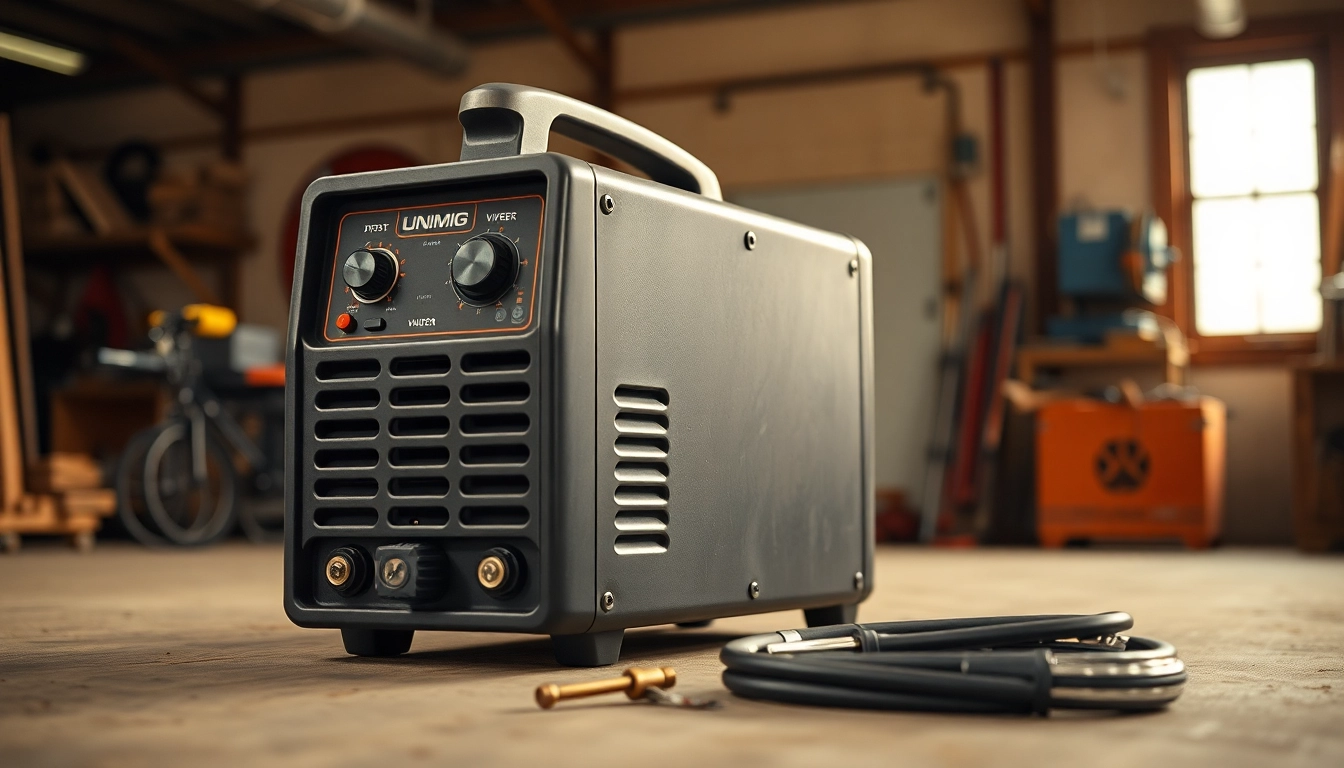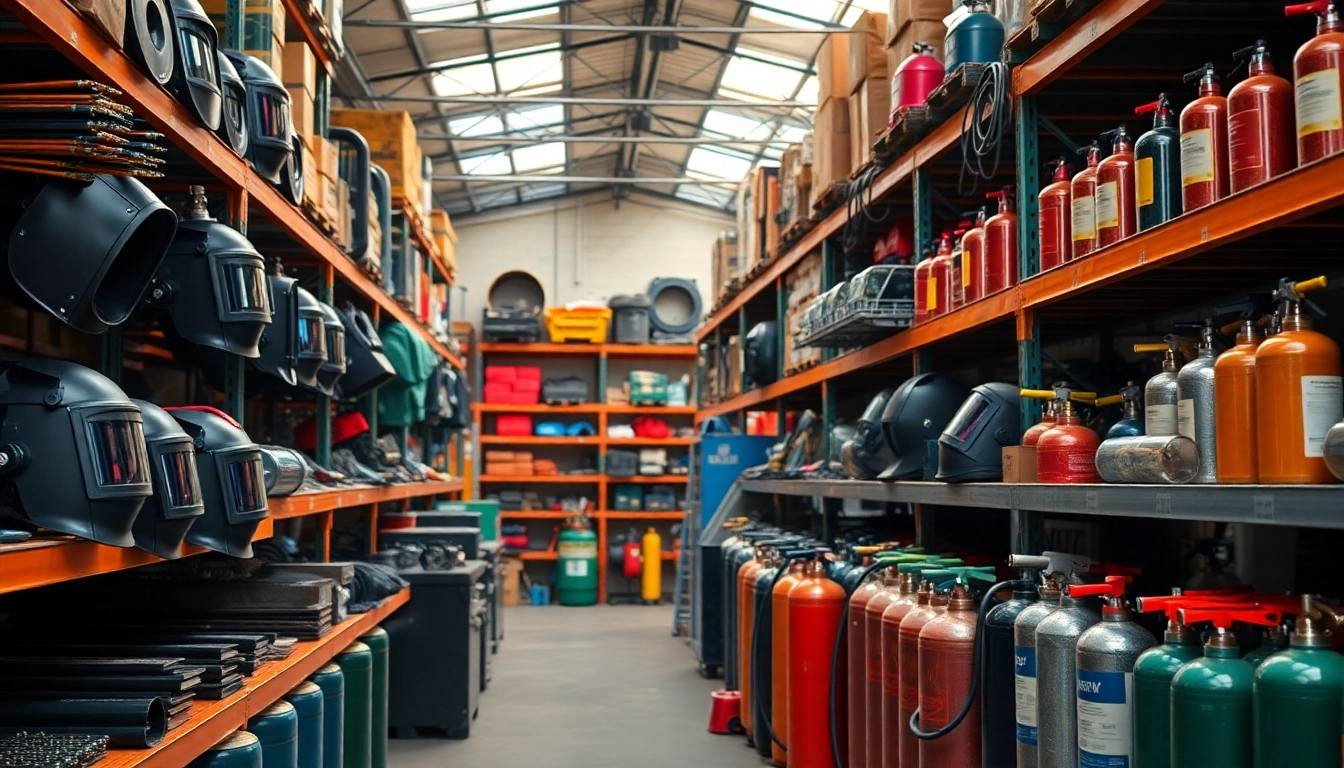Understanding the Unimig Viper Series
Overview of Unimig Viper Models
The Unimig Viper series represents a robust line of welding machines designed for a variety of welding applications, including MIG, TIG, and Stick welding. As a versatile solution tailored for both novice and experienced welders, the Viper series offers an innovative approach to welding that combines usability with high performance. Among the different models available, notable ones include the Viper 185, the Viper Multi 195 MAX, and the Viper 180 AC/DC, each catering to distinct user needs and preferences.
Key Features and Specifications
The key features of the unimig viper series are integral to their appeal. Here are some highlights:
- Multi-Process Capabilities: The Viper models can perform MIG, TIG, and Stick welding, making them suitable for a wide variety of projects—from automotive repairs to structural welding.
- Portability: Designed with compactness in mind, these welders are lightweight and portable, ideal for both shop use and onsite applications.
- User-Friendly Interface: Many models feature a synergic control panel that simplifies the welding process, automatically adjusting the parameters according to the metal being welded.
- Durability: Built with high-quality materials, the Viper series machines boast a robust construction that can withstand rigorous use in different environments.
- Power Efficiency: These welders are designed to be energy-efficient, requiring a standard household power outlet while still delivering high performance.
Comparative Analysis with Competitors
When compared to other brands, the Unimig Viper series stands out due to its balance between affordability and high-end features. For example, competing products often lack the synergy controls and multi-process capabilities available in the Viper models. Brands like Miller and Lincoln Electric offer comparable products but at a higher price point without substantial benefits in functionality. A detailed examination of the specifications shows that while the Viper series may not boast the absolute highest outputs, their versatility in handling various welding methods makes them appealing to casual users and tradesmen alike.
Applications of the Unimig Viper
Residential vs. Commercial Use
The scope of applications for the Unimig Viper series extends across both residential and commercial sectors. For residential use, hobbyists and DIY enthusiasts find the Viper models perfect for small projects such as crafting metalworks, repairing furniture, or even vehicle maintenance. The portability and ease of use make it accessible for users of all skill levels. Conversely, in commercial settings, the Viper series is utilized in more demanding environments such as construction, automotive shops, and manufacturing. Their reliable performance allows professionals to complete tasks efficiently without compromising on quality.
Best Practices for Different Metals
Understanding how to effectively weld various metals is crucial for maximizing the utility of the Unimig Viper series. Here’s a breakdown:
- Mild Steel: The Viper series excels at welding mild steel, making it a favorite among welders. Utilization of MIG welding with gas can yield clean, strong beads.
- Stainless Steel: For stainless steel projects, using TIG welding prevents contamination and promotes a neat appearance. The Viper models can handle this with precision when set up properly.
- Aluminium: While you can weld aluminium with certain models, specific settings must be adjusted. Using the correct wire and gas mixture is essential for achieving optimal results.
Real-World Applications and Success Stories
Many users have transitioned to using the Unimig Viper models after previously employing other brands. For instance, a local automotive repair shop improved its workflow significantly by switching to the Viper 185 model, noting a decrease in setup time and an increase in project throughput. Testimonials highlight the machine’s reliability and ease of maintenance, proving its worth in a bustling shop environment.
How to Choose the Right Unimig Viper for You
Assessing Your Welding Needs
Choosing the right model within the Unimig Viper series involves a clear understanding of your specific welding needs. Start by evaluating the types of projects you anticipate completing. Are you primarily working on thin sheet metals, or do you require robust capabilities for heavy-duty welding? Consider the following:
- Frequency of Use: Regular users may benefit from a multi-process welder like the Viper 195 that provides flexibility for various tasks.
- Type of Materials: Ensure the chosen model aligns with the materials you will be welding primarily. It’s crucial to select a machine that can efficiently handle those materials.
- Skill Level: Beginners might prefer a simpler, synergic model, while more advanced welders can leverage the extensive capabilities of high-end units.
Budget Considerations
Your budget will significantly impact your decision. The Unimig Viper series is priced competitively, making it accessible for most professionals and hobbyists alike. Evaluate not just the initial purchase price but also long-term operating costs. Consider the availability of consumables and accessories, as these will influence ongoing expenses:
- Initial Costs: Compare prices across models to ensure you get the best value for your needs.
- Operating Costs: Higher wattage machines might offer better performance, but they can lead to increased electricity costs over time.
Future-Proofing Your Purchase
When selecting a Unimig Viper, consider future projects and how the model you choose may adapt to them. Investing in a machine that allows for upgrades or features multi-process capabilities can save you from having to purchase additional welders down the road. Evaluate your potential for growth in welding skills or business needs, as a higher initial investment can provide better long-term returns.
Maintaining Your Unimig Viper
Regular Maintenance Tips
Proper maintenance is crucial for ensuring your Unimig Viper performs optimally over time. Here are some tips for care:
- Keep it Clean: Regularly clean the exterior and interior components to prevent dust and debris accumulation, which can affect performance.
- Inspect Cables and Connections: Frequently check the cables for wear and ensure all connections are secure. Loose wires can lead to inconsistent performance.
- Calibrate Settings: Regularly check and recalibrate settings as necessary to maintain welding consistency and quality.
Common Issues and Troubleshooting
Despite their reliability, unanticipated issues may arise with the Unimig Viper series. Here are some common problems and how to troubleshoot them:
- Inconsistent Arc: This may indicate issues with the contact tip or the wire feed. Start by checking for obstructions or signs of wear.
- Overheating: If the machine overheats, turn it off immediately to allow it to cool down and check for any blockage in the vents.
- Poor Penetration: If you’re consistently achieving weak welds, check the voltage settings or wire feed speed.
When to Seek Professional Help
If issues persist despite troubleshooting efforts, it may be time to consult a professional. Consider reaching out to authorized service centers for detailed diagnostics and repairs. This is particularly vital for electrical issues that could affect safety.
Getting the Most Out of Your Unimig Viper
Advanced Welding Techniques
To maximize the capabilities of your Unimig Viper, developing advanced welding techniques can significantly enhance your skill set. Here are some strategies:
- Practice Welding Positions: Experiment with different welding positions (overhead, vertical, flat) to gain versatility.
- Utilize Pulsed Welding: For thin materials, employing pulsed welding settings can prevent burn-through and provide better control over the weld bead.
- Integrate Welding Filler Materials: Use appropriate filler materials to enhance joint strength and appearance.
Consumables and Accessories
Selecting the right consumables and accessories is vital for achieving high-quality welds. Ensure you have an adequate supply of:
- Contact Tips and Nozzles: Regular replacement of these items ensures cleaner welds and smooth operation.
- Welding Gas: Depending on the process, having the right shielding gas is vital for protecting the weld pool from contamination.
- Protective Gear: Invest in high-quality helmets, gloves, and clothing to safeguard against weld splatter and UV radiation.
Building Your Welding Skills
Continuous learning is key to becoming a proficient welder. Attend workshops, online courses, or apprenticeships to enhance your skills. Consider joining welding forums or communities where you can exchange tips and learn from experienced welders. Regular practice will also solidify your skills, enabling you to tackle increasingly complex projects with your Unimig Viper series welder.



